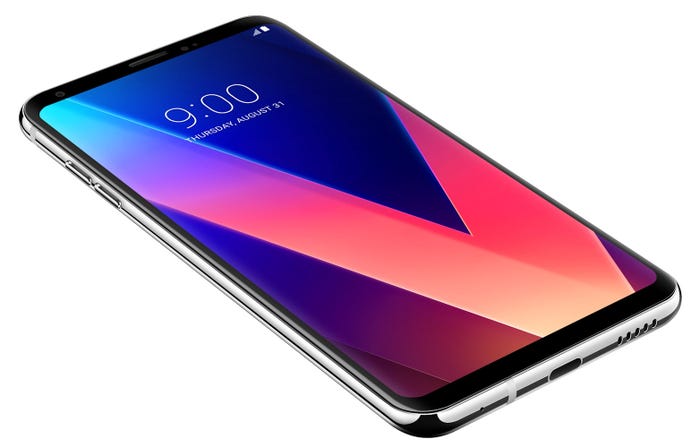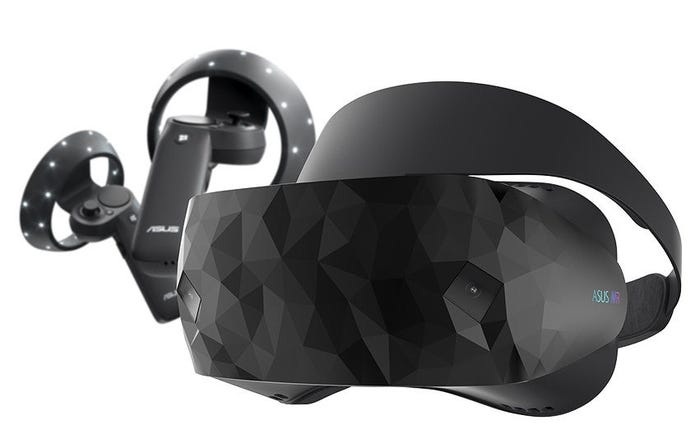IFA 2017 is more connected than ever
The world’s second biggest consumer electronics show is increasingly all about connected devices as IoT becomes endemic.
August 31, 2017

The world’s second biggest consumer electronics show is increasingly all about connected devices as IoT becomes endemic.
IFA has always been a strange event to report on, with sexy smartphones sitting incongruously alongside washing machines and other frumpy domestic appliances. But with the irresistible ubiquity of connectivity those two words are increasingly colliding in a more substantial way. IFA technically opens tomorrow, but just as with MWC most of the juicy stuff comes out early.
Samsung
As probably the world’s biggest consumer electronics company Samsung usually steals the show, but the big launch of the definitely-not-explosive-in-any-way-honest Galaxy Note 8 happened a week ago. Instead Samsung focused on wearables – specifically the kind of fitness-focused smartwatch that seems to be all the rage these days.
Gear Sport is the main offering in this category. Samsung has wisely gone for a circular form factor for this smartwatch and, apart from that and the usual suite of sensors and software designed to cater to the fitness obsessive’s every need, the emphasis is on ruggedization, including 50m water resistance.
The same applies to the more stripped-down Gear Fit2, which Samsung calls an ‘advanced GPS fitness band’. Both products have partnered with iconic pose-pouch swim brand Speedo to support its swim-tracking platform Speedo On, ensuring you can now humble-brag on social media about your trip to the pool too. Lastly there are some Bluetooth ear buds called Gear IconX. Watch the video below to get a sense of just how much of a better person you will be if you buy all this new Samsung stuff.
Smartphones
IFA tends to be where phablets are launched, and in the absence of the Note 8 the biggest news seems to be in the form of LG’s V30 6-inch flagship smartphone. The emphasis seems to be on video capture and playback. Claiming the first F1.6 aperture camera lens, the first glass Crystal Clear Lens, the first OLED FullVision display and Cine Video mode for producing movie-quality videos.
The phone, which also features some co-branding with premium audio brand B&O, seem to be well received and compared favourably to LG’s previous flagship effort. LG, of course, is also a huge CE brand so it has launched a bunch of other stuff, much of which will offer connectivity in the off chance we ever solve the smart fridge puzzle. Oh, and it looks like Sony and Huawei are among the other major brands to whack out new smartphones at the show.

Smart assistants
One possible step forward for the connected home may be the current trend for devices to feature in-built support for smart assistants such as Amazon’s Alexa and Google Assistant. LG went big on this and seems optimistic that, while we’re still not prepared to delegate the weekly shop to the fridge, we may be happy to talk to it.
“The development of voice recognition technology plays an crucial role in advancing our own IoT and smart technologies,” said Song Dae-hyun, President of LG’s home appliance bit. “By adhering to LG’s Open Platform philosophy, we’re able to deliver a diverse range of benefits and services for our customers that is unrivaled in the industry. By strengthening our relationships with Google, Amazon and other players in this space, we’re making amazing headway in the Fourth Industrial Revolution.”
Plenty of other devices have been launched that support either or both of these platforms and that trend is likely to continue at CES next January. Apple’s Siri is notably absent from most of these announcements and it’s becoming increasingly difficult to see how Apple’s closed approach to these things can thrive in the very heterogeneous home appliance environment. Even Microsoft seems to have got the memo.
Mixed reality
Microsoft is offering a different take on virtual reality in the form of ‘mixed reality’. In theory this was expected to be a mix of VR and augmented reality – superimposing digital images on the real world – with some external motion-tracking tech thrown in for good measure.
Microsoft has been banging on about this for a while, and the price points are quite aggressive, but initial, appropriately mixed, reviews indicate it’s struggling to justify the hype. Nonetheless Asus and Dell have launched mixed reality products at the show as part of a general Microsoft love-in incorporating new PCs, etc.

About the Author
You May Also Like


.png?width=300&auto=webp&quality=80&disable=upscale)







.png?width=300&auto=webp&quality=80&disable=upscale)


_1.jpg?width=300&auto=webp&quality=80&disable=upscale)